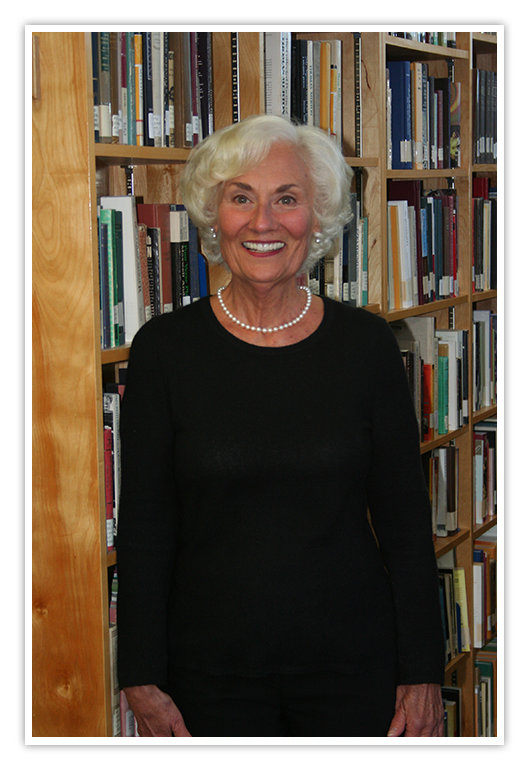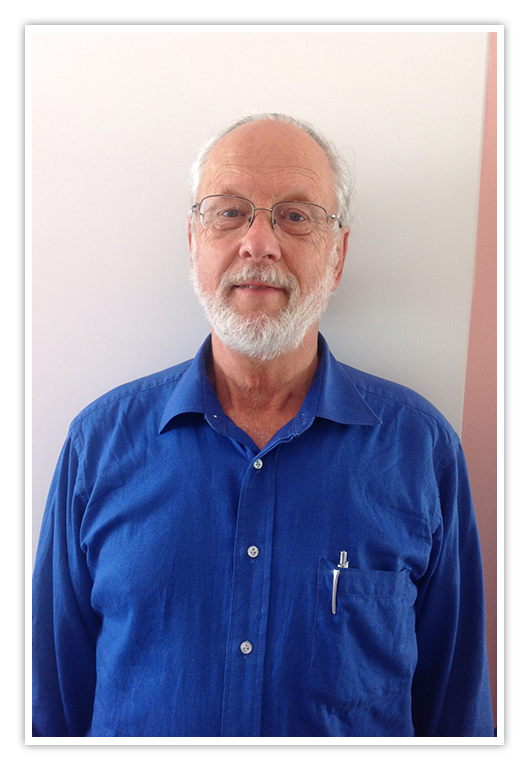Ready to learn more?
Get all the details straight to your inbox!

Luther College students are eligible for nearly $100,000 in academic awards – in addition to scholarships and bursaries awarded by the U of R.

Luther College students are U of R students and receive all the same benefits. Upon graduation you will receive a U of R degree.

To enrol as a Luther College student, simply fill out the University of Regina application form and select Luther as your campus of choice.

Smaller class sizes at Luther College means more individualized attention and better connections with your professors, classmates, and academic advisors.

Luther College offers Bundles programs that group together first-year students and classes to give you a great start and help ease the transition from high school to university.

You can book a tour of Luther College, the U of R campus, and our student residence, The Student Village at Luther College, any time throughout the year. Contact our Recruitment Office at 1-306-206-2117.

Luther students can register in Arts, Science, or Media, Art, and Performance. Luther students are U of R students and receive a U of R degree.

Living in The Student Village at Luther College, our student residence, comes with a choice of healthy, nutritious meal plans. That means no grocery shopping, no meals to cook, and no dirty dishes to worry about. You can focus on your studies and wellness!
Get all the details straight to your inbox!
By Meredith Rogers Cherland and Carl Cherland 
I, Dr. Martin Luther, wish all lovers of the unshackled art of music, grace and peace from God the Father and from our Lord, Jesus Christ! I truly desire that all Christians would love and regard as worthy the lovely gift of music, which is a precious, worthy and costly treasure given mankind by God. Next to the Word of God, the noble art of music is the greatest treasure in this world.[1]

What’s all the fuss about? Why is Luther College at the University of Regina in Saskatchewan, Canada, commemorating the 500th anniversary of the Protestant Reformation? Why are millions of people around the world traveling to Germany, commissioning art works, organizing hymn festivals and worship services, publications and exhibits, concerts and speaker series? Millions of people seem to believe that the legacy of Dr. Martin Luther still has relevance today.
We do, too. We are Canadian Lutherans who have been associated with Luther College for more than forty years. We grew up singing in church. We recall the psalms that encourage God’s people to sing. As Lutherans we also remember what St. Paul said in 1st Corinthians 14:15. “What am I to do? I will pray with the spirit and I will pray with the mind also. I will sing with the spirit, and I will sing with the mind also.” This article is our attempt to “sing with the mind” about our Lutheran musical heritage.
We are not musicologists. But we are musicians concerned about losing our Lutheran heritage. Every year North American Lutheran churches have fewer members. Daniel Erlander says we have two choices: we can play down our Lutheranism, adopt contemporary music in the style of the entertainment industry, and use 21st-century ways of worshipping. That way we can keep our children in church and attract the people who would otherwise go to other churches. Or we can continue to teach, worship and live as Christians in ways Martin Luther would recognize and approve. We can do these things well and invite people of all races, cultures, and national origins to join us within the beautiful diversity of the whole Christian church. We want to encourage the second response.
First, to shed some light on what we would like to preserve, we will present three contrasts between music in the time of Martin Luther and music as it exists in the world today. Then we will outline a few of Martin Luther’s contributions to church music. We suggest that you read what follows with a copy of the 2006 Lutheran hymnal Evangelical Lutheran Worship in your hand. Almost all the music we will refer to is there. We will cite hymns with the initials ELW (for Evangelical Lutheran Worship) and then the hymn’s number and title in bold, as in ELW 503 A Mighty Fortress. Alternatively, you can search the entire 2006 ELW hymnal online by clicking on this link. We will conclude with a call to today’s Lutherans to remember the musical heritage preserved in our hymnal, and use the music Luther gave them to glorify God.
CONTRAST #1: For Martin Luther, music was real sound. It was live, freely resonating, and produced by human energy, not by electrical energy. Most music we hear today is recorded, or electronically produced, amplified, or digitalized. It gives us only a portion of the real sound.
All music was live till the dawn of the 20th century. But 100 years later, we live in a culture dominated by digitalized sound. Carl’s mother used to say that the difference between real sound and recorded or electronic sound was like the difference between real flowers and plastic imitation flowers. Martin Luther heard sounds that were real. Today, we most often hear sounds that are like plastic.
To remind you of what real sound feels like, we ask you to pick up your hymnal and sing (without accompaniment) the “Great Thanksgiving” on page 152. Put your mind and spirit into the singing, and you will produce real sound.
Then try singing ELW 784 Grant Peace We Pray, in Mercy, Lord. Go on to ELW 517 Lord Keep Us Steadfast in Your Word. Notice that Luther has used the chant melody with different words.
Next look at ELW 509 God’s Word is Our Great Heritage. Notice that Luther has created an original melody, and that a 19th-century Norwegian named Nikolai Grundtvig has provided a clear, strong text for his own time that is true to the teachings of Luther.
Singing with others without accompaniment may seem shocking to you. It is not meant to be entertaining or pretty. But it does have power. It is meant to communicate with other human beings. It is engaging and real.
Now open your hymnal to ELW 503. Try singing “A Mighty Fortress” in the original rhythm of the German language. ELW 504 gives us another more familiar choice. Why does the hymnal preserve the original rhythm for us? It reminds us that the Reformation came in on a song, full of the power to unite people’s spirits. Remember that Estonia, under the rule of the Soviet Union after World War II, received permission to keep their song festivals and their choral groups. The Soviets thought these would be harmless. But singing together kept the spirit and the national identity of the Estonian people very strong throughout the years of Soviet rule.
Music is a call to individual engagement. Martin Luther knew that music had power. He knew that people singing together united them, strengthened them, bound them in community.
He knew the theological power of song. Luther argued that people had a right and a responsibility to actively participate in worship, a right to taste the bread and the wine, a right to pray, and to hear prayers in their own language, a right to sing God’s praises. He connected singing (and participating in the music of the church) with “the priesthood of all believers”. Music is a living gift of God, argued Luther, given to us to express our faith, to encourage, to educate, and enliven us on our journey of faith through life.
CONTRAST #2: Luther encountered most of the music he heard in the context of the Roman Catholic faith. Today most music we hear is NOT the music of the church.
Today music is used in movies and television to evoke and enhance emotions seen on the screen. Music is used to sell things. Music flows through our corporate gadgets and toys to enhance mood. Most music is secular, and part of profit making activity. It is a commodity.
Luther heard much more music in church. Luther knew some drinking songs, university songs, and German and Bohemian folk songs. But he knew many more melodies from the ancient liturgy of the mass. That was true for most people in Luther’s day.
Here is the kind of thing Luther was familiar with: look at ELW 577 Creator Spirit, Heavenly Dove. Its tune dates from the ninth century. Then turn to ELW 355 Sing, My Tongue: this tune is from the sixth century. Try singing ELW 411 We All Believe in One True God. Here Martin Luther took a 14th-century chant melody and presented the words of the Creed for the people to sing. Many of Luther’s contemporaries would have known these tunes, the way we know the melody for “Amazing Grace”.
Think back on your own life. Perhaps you have been inspired by music offered in church, music that stirred the soul. That kind of experience can connect us directly back to 1517, and to Martin Luther. Luther forged anew the link between the power of music and our life in relationship to God. This is our Lutheran heritage. Martin Luther was one of several reformers, but he was the only Reformer who valued the power of music in worship. In contrast, Calvin was indifferent to music, and Zwingli was against it.
CONTRAST #3: Music in Luther’s day was active. Today our culture of entertainment pushes us to give up an active role in music making.
Martin Luther loved music and made it part of his life in every way he could think of. He sang tenor, played the lute, studied music theory, composed music, and supported the professional musicians he encountered. Music was something many people did, in some way. Look at ELW 600 Out of the Depths I Cry to You. Luther wrote the music for his paraphrase of Psalm 130 to provide an example for other hymn writers who would follow. He composed a model for congregational singing. It must have seemed natural to Luther to do these musical things, and to integrate them into his theology and his faith. He wrote: “Next to Theology, there is no art which is the equal of music, for She alone, after Theology, can do what otherwise only Theology can accomplish, namely, quiet and cheer up the soul of man.”[2]
Luther’s musical experience all through his life shaped his understanding of the active role that music could and should play in the Christian life. When he was a child, Luther was a Kurrende singer, part of a choir of children who sang in their home village whenever they were needed, at funerals, at parties, and social events. Those children and their music were part of village life. When Luther was a university student, he sang with his friends. Socializing involved singing. There were no televisions, no smart phones. People sang to participate in the world, to actively enjoy themselves.
We believe this has had wonderful consequences for the Lutheran musical tradition. Luther’s vigorous and expressive character is there in his hymns and in his music. His vigor and character flowered into the power of German chorales in the 150 years after the Reformation, and later into the music of J. S. Bach and other German Lutheran composers.
In contrast, the Calvinist tradition excluded art music (like J.S. Bach’s sacred cantatas and Passion settings) from congregational worship, using only simple psalmody for group singing. The Lutheran Reformation, proceeding from Luther’s understanding of music as a creation and a gift of God, successfully integrated art music with simple congregational song.
Today, most people don’t do music. They consume it. Our culture of corporate entertainment pushes us to give up an active role in music making. We watch music making on television, and are inclined to see the arts as something to be consumed, the way we consume athletic events instead of playing at sports ourselves. The rare exception might be that in European soccer stadiums people still sing together their national and team songs. This music unifies them.
In North America, it is unusual to sing. Today, if children are musical we might give them lessons, then make them compete in music competitions, or perform in public. We treat musical ability as a rare talent. Music is no longer something we all just do.
The irony is that at the time of the Reformation, most people rarely sang in church. They heard music there. The priests and choirs sang the liturgy, while the people often stood and listened. This was passive participation in church.
That is why we say that the Reformation came in on a song. Luther made that so. Luther had always sung. He thought music should be important in the expression of faith. He knew the psalms intimately, and the many verses that call for God’s people to sing. Luther preached that all men and women were called to participate in worship. As an active musician, he took the tunes he knew and adapted them. He gave song back to the people.
Martin Luther got people singing in church, much more than they had been, as a way to effectively get scripture and Christian doctrine into their hearts and minds. He believed that message and music combine to move the soul.[3] Thanks to Luther’s encouragement, hymns began pouring out of Wittenberg in 1523 and 1524.
Luther composed some of these hymns himself. He did not make many musical innovations. Instead, he adapted existing musical forms to the intent of the Reformation.
First, Luther revised liturgical music. He reset the liturgy the priests sang so that every word could be heard and understood by the congregation. Others followed his example and did the same. When we listen to Michael Praetorius’s Christmas Mass (Christmette), we are amazed by the clarity of the text and its message.
Luther took parts of the Office like the Lord’s Prayer and the Creed and paraphrased them as hymns in their own language, so that the congregation could sing them, to express “the priesthood of all believers” in song. See, for example, ELW 868 Isaiah in a Vision Did of Old, which sets and explains the Sanctus.
Secondly, Luther encouraged the training of choirs and insisted on polyphonic singing in the curriculum of the schools. He loved singing in parts himself. (He was a tenor.) He gathered his composer friends around him, and encouraged them to enrich the body of polyphonic church music as well as congregational song.
Thirdly, and we think most importantly, Luther wrote hymns that were the beginnings of the great Lutheran chorales. We have had the pleasure of singing those great Lutheran chorales at the German service at Trinity Lutheran Church in Regina on Sunday mornings. They still stir the soul. We have been told that for many generations after Luther’s time, his Lutheran chorale melodies were very well known. People in Germany could sing them with confidence, and without hesitation.
Luther blended traditionalism and bold originality in his hymns. Most often he began with an existing text or an existing melody. Sometimes he only wrote new words for them. And that is where our title comes from: “Why should the devil have all the good tunes?” This was something Luther may have said in a response to a question about why he sometimes used songs from the secular world to create new hymns for use in church. We cannot be sure he actually said it, but it does sound like something Luther might have said.
In response to a question about the creative process of composing, the 20th-century composer Igor Stravinsky is believed to have said, “Only God creates. I rearrange.” That is what Luther did. He took the tunes he knew, that the people knew, and arranged them differently to make them into hymns. For example, see ELW 743 To God the Holy Spirit Let Us Pray. The tune and the first stanza text are not by Luther. They are a popular 13th-century folk song. He took that and added three stanzas to it.
Luther borrowed in other ways, too. Sometimes the first line of a hymn by Luther would paraphrase a psalm, as ELW 504 A Mighty Fortress paraphrases the beginning of Psalm 46 (“God is our refuge and strength, a very present help in trouble”). Sometimes Luther used the first line of an earlier Latin or German hymn, like ELW 263 Savior of the Nations Come.
For ELW 784 Grant Peace, We Pray, in Mercy, Lord Luther took the plainsong chant called “Veni Redemptor Gentium” and transformed it into a chorale, “Nun komm der Heiden Heiland”. Later Bach based two sacred cantatas, nos. 61 and 62, on that chorale.
Sometimes Luther reworked a familiar canticle, like ELW 440 In Peace and Joy I Now Depart, based on the “Nunc Dimittis” (Simeon’s Song). The canticle had chant features, but Luther reworked the text to make it more Christ-centered, and he also reworked the tune in his own compositional style. It appeared in the Wittenberg Hymnal of 1524.
Sometimes Luther did compose his own music. Two of the best known and most beloved of Luther’s hymns have tunes that were entirely original with Luther. He wrote ELW 268 From Heaven Above to Earth I Come for his children’s family Christmas pageant in 1534. He took an old German children’s singing game for the simple hymn structure, and adapted it for home and church. And the greatest musical monument of the Reformation, ELW 504 A Mighty Fortress is Our God, is also an original Luther melody.
Martin Luther’s hymns still do what they did 500 years ago. They proclaim Christ and his saving grace. They teach the faith and encourage the faithful. They give voice to the people’s praise of their God. They set forth the story of Christ, and extol the relation between Christ and the faithful soul. They do all this with beautiful, strong poetry, and with music that is memorable and easy to sing.
Luther’s music calls us to a Godly life and helps us to be other-centered. And why should the devil have all the good tunes…?
We want to preserve our Lutheran musical heritage, so that we will continue to hear real sound in church. We want to hear more and better music in our churches. We want to encourage more people to be active in making music in church.
Our red hymnal preserves our Lutheran musical heritage for us, but it also documents the cultural changes in the church music of our time. Look at ELW 395 Come, Holy Ghost, God and Lord and ELW 396 Spirit of Gentleness. On the left hand page you have the 16th-century Lutheran hymn with text by Martin Luther, strong and clear. On the right hand page you have gentle waltz time and 20th-century poetry.
Look, too, at ELW 594 Dear Christians, One and All, Rejoice and ELW 595 Jesus Loves Me! On the left you have an autobiographical and exuberant text by Luther with a strength that has endured for hundreds of years because of its musical quality. On the right you have a simple, repetitive tune and text that are enervating. ”Jesus Loves Me!” places us in a comfortable pew, and demands nothing of us.
Contemporary culture encourages us to be followers. God calls us to be active. Singing can be seen as a metaphor for our faith journey.
The result of Luther’s musical life, and his understanding of the role music can play in the faith, was a flourishing Lutheran tradition of church music of richness, simplicity and depth, and the development of a rich treasure of choral, organ and congregational music after the Reformation.
Many of us in Canada have a lot of “stuff”, and often lose sight of what we have as assets. We need opportunities to explore what’s in the attic. It is good to look through what you have and might still be able to use. You are likely to find some unused gems. We have enjoyed this opportunity to remember our heritage, to use again what we know and love, and to think about the role music can play in the life of a believer: praise and adoration, vocation, service to your neighbour. Music is part of the Christian journey. But like other aspects of our heritage, we fear that many useful and valuable things are stored in the attic and are not used. We need to rediscover them.
Bibliography
Erlander, Daniel W. Preface to Baptized We Live: Lutheranism as a Way of Life. Minneapolis, MN: Augsburg Fortress Publications, 1995.
Evangelical Lutheran Worship: Pew Edition. Minneapolis, MN: Augsburg Fortress Publications, 2006.
Luther, Martin. Liturgy and Hymns. Vol. 53 of Luther’s Works. Ed. Ulrich S. Leupold. Minneapolis, MN: Concordia Publishing House, 1965.
Praetorius, Michael. Christmette. Hamburg: Deutsche Grammophon, 1994, compact disc.
Reske, Peter C., ed. The Hymns of Martin Luther. St. Louis, MO: Concordia Publishing House, 2016.
Schalk, Carl E. Luther on Music: Paradigms of Praise. St. Louis, MO: Concordia Publishing House, 1984.
* This article is based on a “Table Talk” given on February 28, 2017 at Luther College, University of Regina, by Dr. Meredith Cherland, Professor Emerita, Faculty of Education, University of Regina, and her husband, Dr. Carl Cherland, who founded the Luther Bach Choir at Luther College in 1982 and held the Pfeiffer Memorial Chair of Music at the Luther College High School for over thirty years.
[1] As quoted in Carl Schalk, Luther on Music: Paradigms of Praise (St. Louis, MO: Concordia Publishing House, 1984), p. 5.
[2] Ibid., p. 7.
[3] Ibid., p. 41.